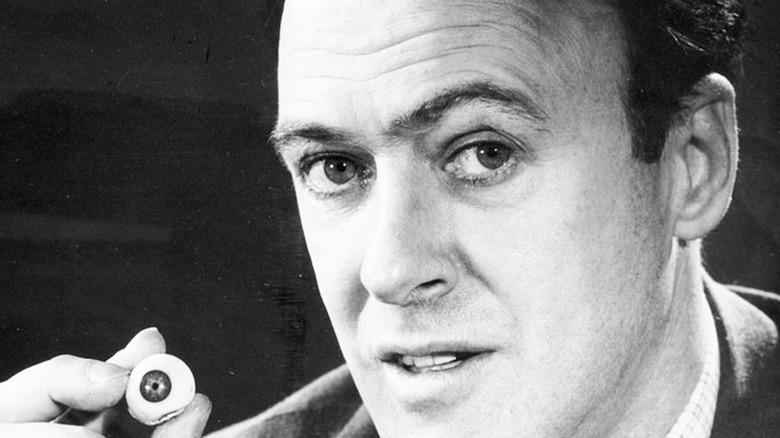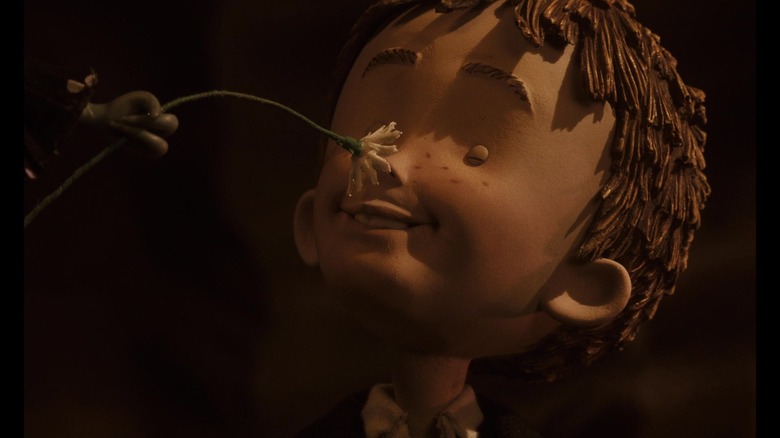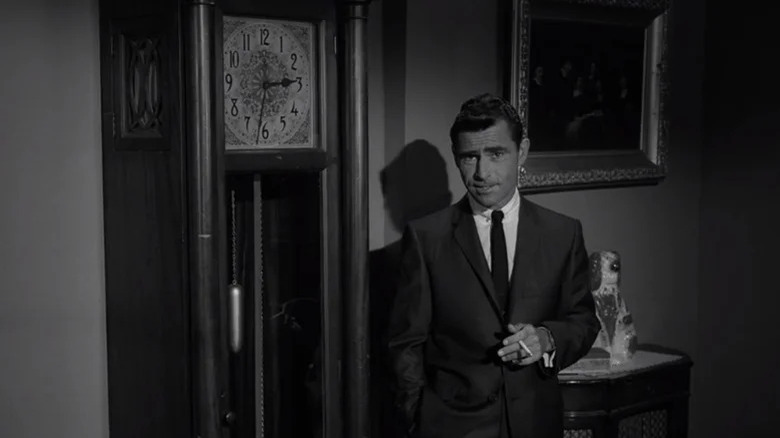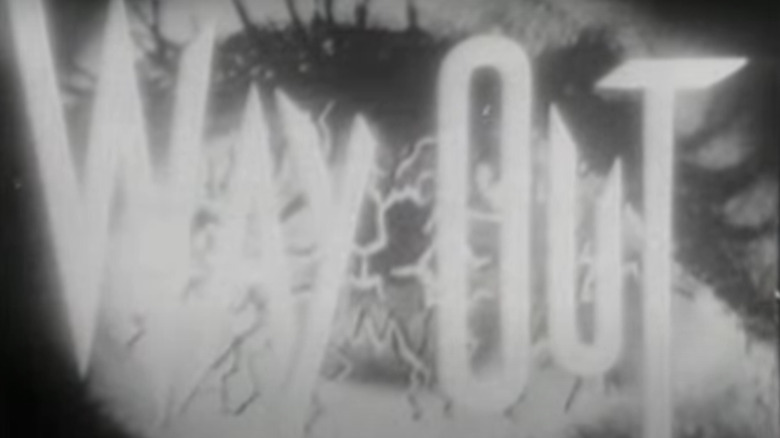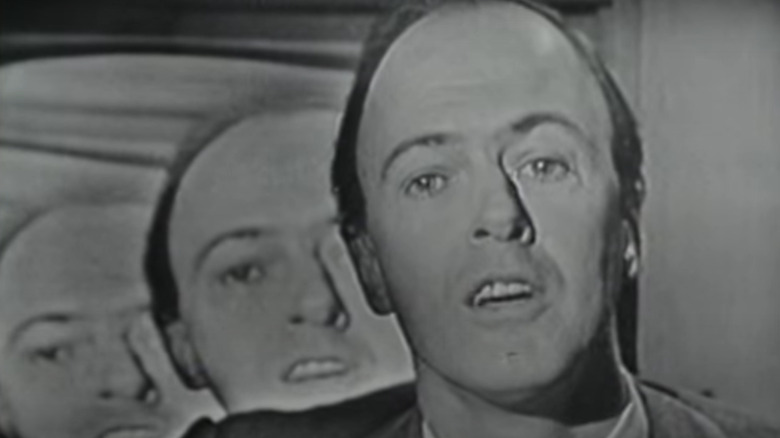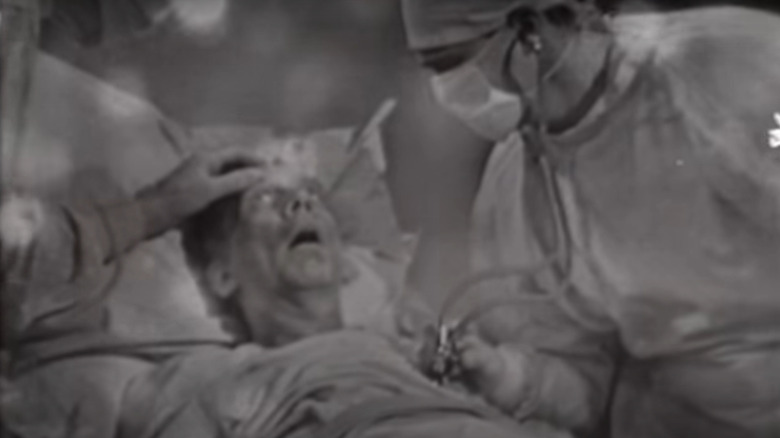Roald Dahl Tried (And Failed) To Compete With The Twilight Zone
Roald Dahl classics remain popular in 2023, with Hollywood seemingly never tiring of adapting the author's work. We'll soon be treated to yet another "Charlie and the Chocolate Factory" interpretation with Timothee Chalamet's in-canon prequel "Wonka." After acquiring the Roald Dahl Story Company, Netflix even threatened us with a Dahl extended universe back in 2021, which is surfacing in the form of Wes Anderson's "The Wonderful World of Henry Sugar." In the age of IP reigning supreme, all of this shouldn't be all that shocking. Still, it feels particularly loathsome to hear the author of beloved children's books being so casually concatenated with the language of Hollywood blockbuster excess. However you feel about it, though, Roald Dahl is big business.
But what's most impressive about the author isn't how easily his work can be endlessly adapted by Hollywood, but his polymathic element. The British author was a former RAF pilot who flew in World War II and personally took down multiple Nazi warplanes. Dahl then became a diplomat and intelligence officer before marrying a U.S. actor, helping develop a device to aid sufferers of hydrocephalus, and penning the script for the fifth James Bond film, "You Only Live Twice." And that's not even half of what Dahl accomplished in his life. In other words, he was far more than a successful children's author, and seemed to excel at whatever he turned his attention to.
One lesser-known episode in the author's life, however, wasn't his most successful moment. Dahl had proved he could adapt to diverse situations and that was reflected in his writing, which ranged from novels to children's stories to screenplays and non-fiction writing. But at one point, the writer fronted a "Twilight Zone"–inspired sci-fi/horror anthology show, which failed to surpass Rod Serling's original despite garnering positive reviews.
Dahl's dark side
Roald Dahl might be best known for penning some of the most enduring children's stories of all time, but a multi-hyphenate such as himself would never stick to just one writing style. His first children's book, "The Gremlins," was published in 1943 and proved popular. But the author then went on to develop a career writing macabre short stories for adults. These tales featured bleak humor and shocking plot twists, and appeared in magazines such as the New Yorker, Collier's, and Harper's.
But even when he returned to writing children's fiction, Dahl maintained the dark humor and sense of the macabre that had characterized his adult stories. Writing for The BBC, Hephzibah Anderson surmised that the author's children's books were "the kind of filthsome, frightsome fare that makes kiddles squirm with gleeful revulsion," where "wives feed their husbands worms and the young are eaten by bone-crushing giants and changed into rodents by be-wigged, toeless hags."
It's hardly the kind of thing you'd think would have made for some of the most popular children's books of all time. But once "James and the Giant Peach" arrived in the U.S. in 1961, Dahl's career as a children's author was solidified. Even that book, as Anderson noted, was delayed until 1967 in the U.K. due to its alarming content.
All of which is to say that Dahl had a dark side that remained prominent throughout his career as an author. It's part of what makes Wes Anderson's adaptation of Dahl's story "The Wonderful Story of Henry Sugar" so enticing. It's also why it's not all that surprising that Dahl hosted his own "Twilight Zone"-style show featuring the kind of macabre tales the writer was known for.
Dahl v Sterling
Developed to replace the dismal and short-lived Jackie Gleason-fronted game show "You're in the Picture," "Way Out" was a half-hour anthology show featuring grim tales of the supernatural. Airing on CBS in 1961, the show would run at 9:30 pm on Friday nights directly before "The Twilight Zone" (which was, at the time, already a hit).
When "Way Out" debuted in March of '61, "The Twilight Zone" had been running for almost two years. Rod Serling, the mind behind the show and writer of 92 of the series' 156 episodes, had helped propel "The Twilight Zone" to popularity with his wry introductions and creepy narration. The show would, of course, become somewhat of a cultural phenomenon, influencing numerous directors and remaining relevant to this day. Serling would pioneer the sci-fi genre for years following "The Twilight Zone," so it was always going to be difficult to compete.
Which is probably part of the reason why "Way Out" only lasted one season, running for 14 episodes from March to July of '61. But that's not to say Roald Dahl's show didn't give Serling and his sci-fi horror anthology series a run for its money. After all, it had a similarly charismatic host providing his own creepy monologues to introduce each episode. And those episodes weren't bad, either, rivaling "The Twilight Zone" and its own macabre and unsettling tales.
Way Out
As recounted by FilmFax Magazine, in 1961 renowned producer David Susskind was brought in to help develop a show to replace "You're in the Picture." Susskind quickly conceived of the horror sci-fi anthology show that would become "Way Out" and tapped Roald Dahl, then known for his dark short stories for adults, to help bring it to fruition. Initially, Susskind wanted to buy Dahl's stories, have the author adapt them for the small screen, and have him host the show. As the producer recalled, "He was six-foot-seven, weighed about one hundred and twelve pounds, had an English accent, and a wonderful modulated voice."
Dahl agreed and the show went into production with him introducing each episode from the CBS control room — a strange mirroring effect added to his face to heighten the sense of otherworldliness. The author-turned host would also smoke cigarettes during these introductions, filling the frame with smoke and further enhancing the eerie ambiance. As noted by MeTV, this simultaneously took care of the show's obligations to promote its sponsor, L&M Cigarettes. It also recalled Rod Serling's penchant for smoking during the opening segments of "The Twilight Zone."
In Dahl's own introductions, he would deliver dry, darkly funny monologues, discussing such grim subjects as how to murder your spouse. As FilmFax Magazine noted, "He would tell 'pleasant' stories of his boyhood in Norway, where when somebody died and the ground was frozen solid, they would sharpen the legs and hammer the body into the ground 'like an enormous nail.'"
A Twilight Zone companion show
There were several other similarities between "Way Out" and "The Twilight Zone" that went beyond both being a horror sci-fi anthology series that featured eerie introductions from quietly charismatic hosts. "Way Out" was produced in New York, where as FilmFax noted, the producers could "draw from the great wealth and talent in the New York live theater." Similar to "The Twilight Zone," then, "Way Out" featured an array of top-notch actors that would go on to have stellar careers.
The Dahl-fronted series even featured an intro sequence that included a close-up of an eye, which recalled the alternate intro to "The Twilight Zone" briefly used during the first season of Serling's show.
Unlike Serling, however, Dahl would not write the majority of his series' episodes. Serling remained the driving force behind the scenes of "The Twilight Zone," penning the majority of the show's episodes throughout its run. But, despite being tapped for his array of macabre short stories, Dahl would actually only write the first episode of "Way Out," entitled "William and Mary," in which a husband keeps his brain conscious after dying, only to witness his wife engage in a life of frivolity and freedom. The other 13 installments would all be penned by other writers but maintained their quality throughout, aided by the host's urbane yet creepy presence.
Way Out got lost in the Twilight Zone
Unfortunately, despite pretty much everything working in its favor, ratings for "Way Out" just weren't as high as CBS was expecting, and Roald Dahl and David Susskind's horror anthology was canceled after its first season. Interestingly enough, "The Twilight Zone" experienced a similar phenomenon in its first season. Having been praised by critics, the show's ratings weren't what CBS was hoping for. As The Gist put it:
"A month after its premiere, 'The Twilight Zone was' pulling in 20 million viewers each Friday night, which was considered "borderline" ratings at the time. Critics raved about the show, but most were uncertain if a wider audience would appreciate what Serling was hoping to achieve."
That separation between critics and the wider audience basically held for "Way Out," too. But by its second season, "The Twilight Zone" was pulling in viewers — even if it did repeatedly run afoul of censors — while Dahl's anthology series struggled. Perhaps CBS expected audiences, already primed by season one of Rod Serling's show, to immediately tune into Dahl's alternative and were put out when that wasn't the case.
Whatever the reason for the network sticking with the former and not the latter, "Way Out" was well and truly done after its first season, and wouldn't be aired following its cancellation. Thankfully, several episodes of the show are now available on YouTube, while the series as a whole resides with The Paley Center for Media. Meanwhile, Dahl, who passed away in 1990, continues to be constant pop culture presence, and will, much like the still-conscious brain from "William and Mary," remain suspended in a semi-living state as long as things like the Dahl cinematic universe exist.
